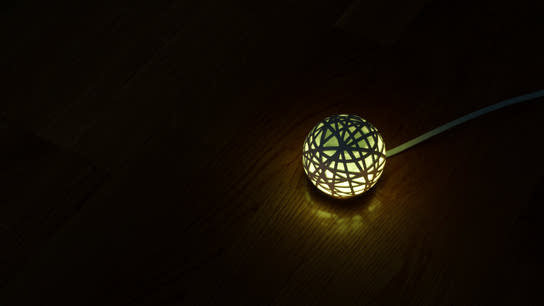I thought I’d revisit the Sense sleep tracker which I first reviewed back in . The Internet connected alarm clock has now been discontinued after two years on the market, and the online services and apps are expected to close down soon. So, did a sleep monitoring system improve my sleep habits?
This odd orb device watched me sleep for nearly two years. The Sense failed to gently wake me up in the morning, failed to deliver on promised features, and ultimately failed as a sustainable business.
Discontinued
CEO and founder James Proud announced the closure of Hello, Inc in and said he didn’t know what would happen with the expensive devices his company had already sold.
Two months after that announcement, it’s looking like the devices will be turned in to useless bricks as they completely depend on infrastructure delivered by the company. The Sense is still up for sale on Amazon and other retailers even though the product is expected to stop working any day.
The Hello, Inc. website have been down a few times following the announcement with outages lasting a few hours. There have been no other communication from the company clarifying anything about when servers will shut down.
What have changed since my original review?
I stopped using my Sense in late May, just a few weeks before the announcement.
My Sense insisted that I needed to replace the batteries on the Sense Pill, a small pillow-attached tracker that’s paired with the main Sense orb. However, it didn’t matter if the batteries were replaced or not, it insisted the battery level was low and stopped tracking sleep data. This went on for a about two months before I gave up, disconnected the Sense, and put it in a drawer.
I’m somewhat surprised that the software problems I mentioned in my original review weren’t ever addressed. I wrote about the unpleasant noise disruption when alarm tones and ambient sleep sounds looped at the end of their playback. This is clearly something that could have been addressed in a software update, but it wasn’t ever addressed.
Sleep sounds, the various ambient noises the Sense orb could produce to drown out the neighbors, was my favorite feature. There are apps that do the same, and since you’d to turn this on from the Sense app — there wasn’t much benefit to using this feature on the Sense instead of a standalone app. Every standalone app I’ve tested have also managed to loop their soundtracks without making disruptive noises.
Considering that the Sense knew when I went to bed, it should have been able to start playing sleep sounds on its own. Automatically fading-in sleep sounds when I went to bed would be great! This is also something that could have given the Sense an edge over standalone apps and it could have been added in a firmware update. This potential was never realized.
The alarms didn’t wake me
I’m a heavy sleeper. The volume and intensity of the overly-pleasant wake-alarm options the Sense offered could nearly never raise me from sleep.
I vaguely recall turning off the Sense once or twice over the last year or so, but would most often sleep through the alarm until my backup phone alarm woke me up some 15 minutes after Sense were set to go off. If I turned off my phone’s alarm clock, I’d never wake from the Sense alone.
At least for me, as a heavy sleeper, the Sense didn’t fulfill it’s primary function. Admittedly, I’ve considered investing in alarm clocks that shake the entire bed or give me small electric shocks to wake me.
Where are the push notifications
The Sense produced a proprietary Sleep Score that was supposed to represent how well/calm you slept. This score was available when you opened the app in the morning.
The company promised to offer push notifications with the Sleep Score every morning, making them more visible and actionable. I rarely opened the app for doing anything other that adjusting alarms or starting the ambient sleep sounds that the orb could play.
However, the months and years went by after the product was shipped — yet no push notifications arrived. The app was redesigned several times in this time period, but the daily sleep reports never materialized.
I’m frankly surprised the company went bust before they managed to ship this advertised feature. Push notifications isn’t a difficult technology to implement. Even the least elegant single-developer apps have them, yet all the millions and resources that Hello, Inc. had available wasn’t enough for them to implement push notifications.
Conclusion
The Sense was over-designed yet didn’t deliver on the features they’d promised their customers. I wouldn’t have kept using the product even if the current level of service hadn’t shut down or I didn’t experience a hardware failure just before the company announced closure.
I bought an overpriced gimmicky alarm clock that was totally dependent on a hosted web service that’s about to be shut down for good. That purchase was a stupid mistake and I regret it today.
Some customers are opting to extend the life of their Sense sensors by asking Hello, Inc to open-source their sleep data processing system. Hello haven’t responded to these requests, and frankly they don’t have any motivation for following through on it either. They’ve already sold the product and made their money off the sale.
I believe we’ll see a lot more products being discontinued and their cloud services unceremoniously shut down in the next decade. The only real question is: when will consumers wise up and demand that the devices they buy don’t rely on other people’s servers?
